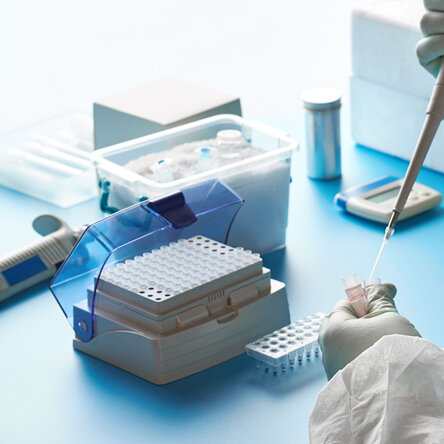Franklin Vets
Franklin Vets - excellence in veterinary care for dairy, farming, lifestyle, equine and household pets. BESTPRACTICE ACCREDITED NZ.
Your account is powered by Storbie. To edit your profile visit my.storbie.com
Your account is powered by Storbie. To edit your profile visit my.storbie.com

Except for BVD vaccinated herds (PCR only) you should all be receiving both viral PCR (polymerase chain reaction) and antibody level results.
The PCR tests, as the name suggests, utilize a chemical chain reaction in which small pieces of DNA can be multiplied numerous times, allowing very small amounts of DNA in a sample to be magnified to the point they can be readily identified. Typically, PCR tests are “Yes/No” tests. Essentially, a negative result tells us that on the day the sample was taken there were no BVD virus particles detected in the milk sample, which is generally good news.
We like to have a follow-up PCR to reduce the risk that a BVD carrier wasn’t in supply on the day of the testing (Infected animals are more likely to be unwell/have mastitis), and to help narrow down the cows involved if follow-up testing is required. If your Bulk Milk BVD PCR test is positive your primary herd health vet will contact you to discuss the results and make a plan.
Interpreting the antibody result is less black and white. It is a common mistake to confuse the results of this test, which measures BVD exposure, for immunity. While it is true that a herd that has a low exposure result will have low immunity to BVD, it is not necessarily true in reverse. Your BVD antibody test may be high, but your herd’s immunity to the virus may still be low, or at least low enough for the issue to reoccur for multiple seasons. Many farmers wrongly assume that having a high antibody result is a good thing, believing that it indicates a strong immunity in the herd and some protection from a BVD introduction, this simply isn’t true. Following a BVD incursion event in which a relatively small group of animals are infected, the milk antibody test can lift significantly while the majority of the herd remains susceptible to infection. So, rather than viewing a high BVD antibody result as a potential positive, we should be regarding this as a measure of the success of your current BVD management strategy, and the lower the score the better you are doing.
Dr Dan Fitzharris BVSc Farm Vet, Waiuku
Franklin Vets - excellence in veterinary care for dairy, farming, lifestyle, equine and household pets. BESTPRACTICE ACCREDITED NZ.



